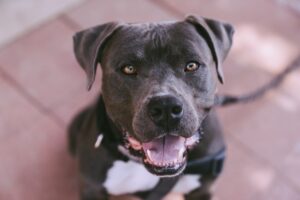
Many dog owners think when their puppy reaches a certain age; they do not have to worry about everything that goes into their mouths. Not true! While most puppies and younger dogs are victims of intestinal obstruction, older dogs can also be at risk.
Remember, if your dog’s vomiting smells of feces, your dog is in a serious, life-threatening situation. What you smell is stools that duplicate and cannot pass normally due to clogging!
Common causes of bowel obstruction
The main cause if this symptom is obstruction or severe lower gastrointestinal trauma. The higher or more pronounced the barrier, the greater the risk that your dog will encounter perforation, rupture and peritonitis.
Vets have removed an incredible array of objects from the guts of our canine companions! These include, but are not limited to, coins, hearing aids, holders, marble, socks, t-shirts, batteries, raw leather, biscuits, bones, plastic wrap, tin foil, children’s toys, rope, ropes, bull bars, balls (including all golf balls) ball!), towels, wood, blankets, toy stuffing, cat litter, yarn, pins, jewelry and nails / screw,
Signs and symptoms
Symptoms usually develop within 7 hours of taking the medicine. However, in some cases, it may take days to notice the problem. The most common warning signs that something is wrong are intermittent vomiting, diarrhea, dehydration, loss of appetite, pale gums, bleeding, weakness, lethargy, electrolyte imbalance, shock and possibly death.

Owners often misunderstand that an obstacle has passed if their pet has diarrhea. Don’t be fooled. Diarrhea can prevent blockage.
Usually upper gastrointestinal obstruction usually causes projectile vomiting.
Lower gastrointestinal obstructions usually result in bloated tummy and vomiting that smells like feces.
Stinking gut blocks the flow of oxygen and blood, causing gangrene in the gut.
Death can happen within hours.
Diagnosis / prognosis
The earlier your pet is examined and the object removed, the sooner the recovery process will begin. Your vet will examine your dog by palpation of the abdomen to check for bloating and tenderness. They will examine the gums to see if they are pale. They can offer an x-ray to identify the item and determine the blockage.
Depending on the severity of the obstruction or aggravating factors such as perforation, rupture, peritonitis or necrosis, most dogs recover fairly quickly.

Treatment
Treatment usually depends on the size, shape, how long the item has been swallowed and the absence of rupture or perforation. Treating to remove an item can be as simple as vomiting or endoscopy recovery. Do not try to induce vomiting yourself.
Your dog will most likely be dehydrated. Your veterinarian may use IV therapy for rehydration and antibiotics to prevent secondary infection. They will probably recommend a rest and a liquid or soft diet before starting a dog’s regular diet.
If the item has passed your dog’s pylorus (where the stomach connects with the small intestine), surgery is required. Postoperative rest, IV therapy, antibiotics and monitoring for leakage followed by liquid diet, soft food, regular diet. They will probably have to stay in the animal hospital for a day or two after surgery.
Bottom line: Always check what your puppy or dog has in their mouth! Take care of what your dog is biting, especially if they are aggressive or obsessive biting. If an item is small enough to get stuck in their throat, throw it away! If you know they are stealth thieves, make sure that items they shouldn’t have access to are well out of reach. Don’t risk it if their vomiting smells like a company, seek immediate help!
